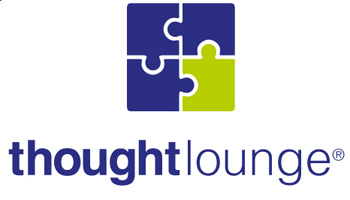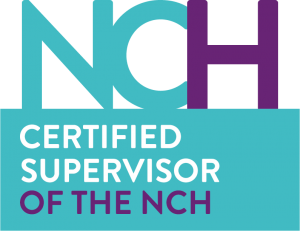Proactive Action in Post-COVID19 Therapy

Proactive Action in Post-COVID19 Therapy.
As a therapist, I had been in lockdown alongside the rest of the nation since 19 March 2020. During the lockdown I volunteered to be mobilised as a part of the response to the COVID19 pandemic contingency but because my wife was a key-worker I was not required. I found the time frustrating due to my internal desire to be there helping people with the issues that they were facing, yet aware of the tension of enjoying time with my family and the guilt at not being able to assist. Isn’t being human tough at times, we are emotional bags of often conflicting emotions. As a therapist one of my tasks is to help people make sense of these.
Being able to socially distance and apply a whole range of precautionary and COVID safe measures at my practice, I am once again becoming busy, and returning to pre-lockdown levels of demand. Now that clients are returning to continue their treatments, I am also seeing some pandemic focussed presenting issues emerge. It is possible that we could well see greater numbers of mental health issues than before the pandemic began – we aren’t finished with COVID19 and therefore how will the future guidance be perceived? What impact are these likely to have on the workforce? There are so many unanswered questions. The Health Foundation (2020) suggests that the most common issues affecting ‘more than two-thirds’ of adults in the UK are:
- Worry about the future
- Stress / Anxieties
- Boredom
Although, as lockdown restrictions are eased it was reported that anxiety and depression levels eased. Yet, the key takeaway for me was that overall levels of reported issues have remained inflated and although restrictions have eased, they have not reduced. To further provide details of what these triggers have been, the Health Foundation (2020) indicates:
- Social isolation
- Jobs and finances
- Reduced access to mental health services and loss of coping mechanisms
Human beings have a number of social needs, sometimes referred to by Griffen and Tyrrell (2013) as Human Givens, which, by the very nature of social distancing and the necessary removal of the social element has meant that there has been a deprivation of social needs. This is especially worrying in the most vulnerable groups, i.e. older people. Although it could be argued that the easing of lockdown measure has improved social interactions, there remains in place barriers to fulfilment, i.e. masks, counter separations and other COVID safe measures. In effect, the perception and belief of social isolation continues and will do so into the near future. In effect, it could be a fair assumption that levels of COVID related anxieties and depressive low mood will continue to rise.
Turning to proactive thinking, how do therapists now create connections between people? The ways that therapists have traditionally improved human needs are to audit and suggest adjustments to:
- Personal security and safety
- Sense of control
- Social attention and interactions
- Trust, intimacy and emotional connections
- Community and experiences
- Value and achievements
- Meaning and purpose
The University of Oxford (2020) proposed that new ways of keeping the infection rate low whilst also allowing social contact and emotional engagement. These proposals consisted of (University of Oxford, 2020):
- Increasing similarity of contacts (homophily), by temporarily restricting contact to those who share key similar features, such as living in the same neighbourhood, where possible.
- Reducing interaction with people who are not connected to one’s usual social contacts, in order to decrease ties that bridge social clusters.
- Repeatedly interacting with the same social contacts (repetition), by creating micro-communities, commonly referred to as social bubbles.
My personal opinion is that emotional social engagement that satisfies the basic human needs must be considered in any future social distancing strategic planning and implementation, if improved mental health is desirable. The time has come to be mindful of how to improve social engagement. Time perhaps for communities to now pull together and connect; greater use of technology to stay connected; improvements in existing friendships and relationships; exercise, meditation and adoption of regular routines; perhaps a spur of the moment surprise or thoughtful gift. A point of note, people naturally seek to help themselves, as a society, we must now be aware of stepping up and leaving selfish tendencies around survival by the way said. As we, as a society, adapt to the buzz words of ‘new normality’, we must all adapt to new ways of being fulfilled socially. As a therapist I am considering all the time new ways of being more effective and helping people to reach levels of contentment and control. If you are reading this and feeling anxious or low, then help is available, please do pick up the phone and ring. Talking can really help. Don’t be lonely or be isolated.
Image - Thanks to Pikist - published into the public domain free for Web Designers
References:
Griffen, J., and Tyrrell, I. 2013. Human Givens: The new approach to emotional health and clear thinking. 2nd Ed. HG Publishing. Chalvington UK.
HEALTH FOUNDATION. 2020. Emerging evidence on COVID-19’s impact on mental health and health inequalities. [ONLINE] Available at: https://www.health.org.uk/news-and-comment/blogs/emerging-evidence-on-covid-19s-impact-on-mental-health-and-health. [Accessed 16 July 2020].
University of Oxford. 2020. Oxford study proposes new strategies for social distancing Lifting the lockdown with social bubbles and beyond: The move to strategic distancing as middle-ground between complete isolation and fully re-opening society | University of Oxford. [ONLINE] Available at: https://www.ox.ac.uk/news/2020-06-04-oxford-study-proposes-new-strategies-social-distancing-lifting-lockdown-social. [Accessed 16 July 2020].





